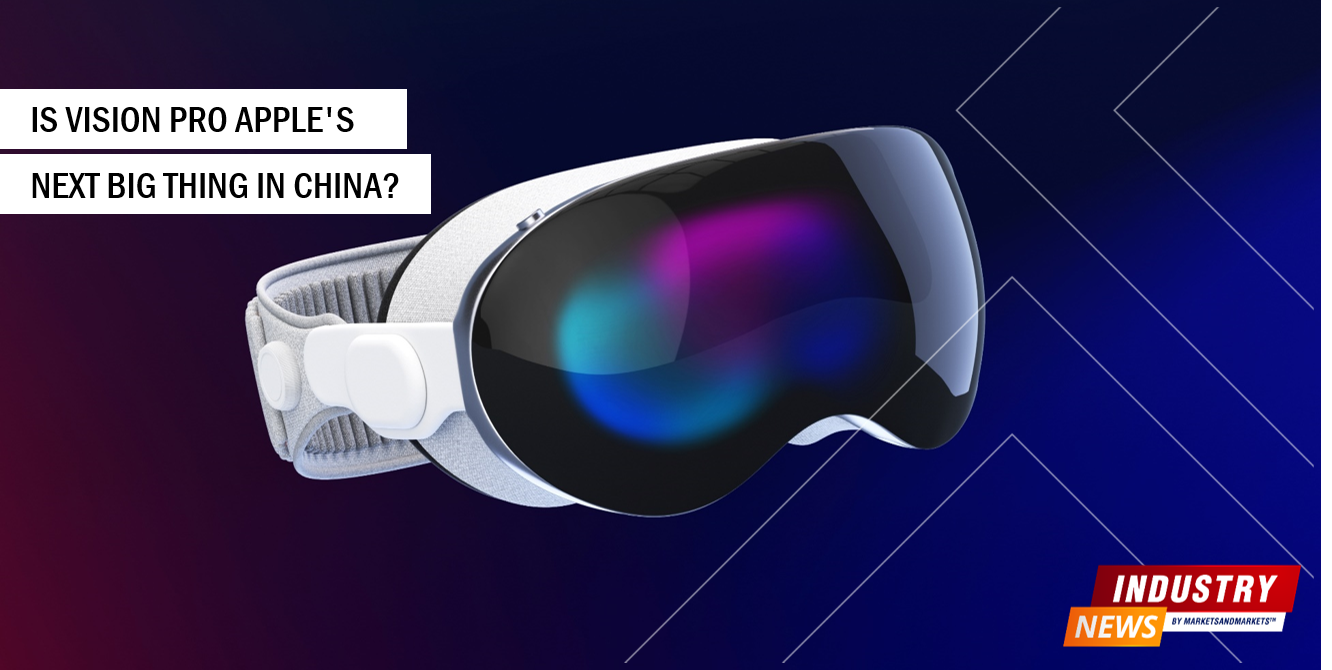AI Powered Semiconductors Supercharge Financial Performance in 2023
This News Covers
- Semiconductor Industry Factors
- Impact of Supply Chain Factors on Semiconductors and Products
- Google and IBM's Semiconductor Research and Advancements
- AI Chip Startups in 2023
Nvidia's Q2 2023 performance is a testament to its strategic vision and adept management in the semiconductor realm.
In the dynamic semiconductor landscape, Nvidia's Q2 2023 results underscore its strategic emphasis on AI-driven growth. These figures offer a deep dive into Nvidia's financial health, growth trajectory, and potential hurdles.
MarketsandMarkets welcomes this development and we look at how it is impacting at an industry level.
Nvidia announced a remarkable $13.5 billion in revenue, with a net profit of $6 billion. This surge is largely credited to the soaring demand for its generative AI chips. The data center segment alone contributed a record $10.32 billion, doubling in just a quarter. Such growth signifies Nvidia's dominant market position and efficient cost strategies.
While AI chips are the main revenue source, Nvidia's gaming sector also flourished, marking a 22% YoY growth at $2.48 billion. This diversification strategy minimizes financial risks, ensuring a well-rounded financial portfolio.
Nvidia's future looks promising with a projected revenue of $16 billion for the upcoming quarter, predominantly driven by AI. The forthcoming GH200 AI chip in mid-2024 is set to bolster this demand. Nvidia's initiative to enhance supply, in collaboration with supply partners, is a strategic step to cater to this demand. This optimism is mirrored in the 8.5% surge in Nvidia's stock price post-trading hours, indicating strong investor confidence.
However, competition looms with Intel and AMD poised to challenge Nvidia's AI supremacy. With AMD's MI300 set for an early 2024 launch and both companies emphasizing AI integration, it's imperative for Nvidia to stay ahead.
Semiconductor Industry Factors
Supply Chain Management
The robust demand for Nvidia's AI chips calls for an efficient supply chain. Collaborative efforts with supply partners and investments in supply chain optimization are pivotal. More on this as you read along.
R&D and Competition
With rivals like Intel and AMD stepping up, continuous R&D investment becomes crucial. It's vital to strike a balance between R&D costs and the anticipated ROI. Proactive strategies, including potential mergers or acquisitions, might be essential to fortify Nvidia's market stance. The semiconductor industry in 2023, particularly in the months of June, July, and August, has been marked by significant advancements, especially in the realm of AI chips.
Impact of Supply Chain Factors on Semiconductors and Products
Let's look into the semiconductor supply chain, its recent history, dynamic movements, and the products that have been affected due to shortages.
Recent History of the Semiconductor Supply Chain
Disruptions due to COVID-19: The pandemic led to significant disruptions in the supply chains and production of chips. With consumers confined to their homes, there was a surge in demand for products like PCs and smartphones, leading to a heightened demand for semiconductors. This was especially true for memory chips made by firms like Samsung, SK Hynix, and Micron. There was also a spike in demand for less-advanced chips required for power management in devices. This led to a shortage of products ranging from game consoles to components for washing machines and even semiconductors for cars, causing a drop in vehicle production from major automakers.
The semiconductor industry's intricacies and its global nature make it a critical component of the modern world, influencing various sectors and economies.
Many countries are reconsidering their semiconductor supply chain operations by onshoring as much of the process as possible. This is an attempt to insulate themselves from global adversities. However, the semiconductor supply chain is inherently global, and the resources required for onshoring would be immense.
From Shortage to Glut: The semiconductor shortage has now turned into a glut in some market segments. This transformation occurred as companies began stockpiling chips to build up inventories. However, as the economy slowed down, the demand for products like smartphones and laptops diminished.
Cars and Game Consoles: These were among the most affected products during the height of the semiconductor shortage.
Memory Chips: There's currently an oversupply of NAND and DRAM memory chips, which are used in devices like laptops and servers in data centers.
ASML's Dominance
ASML, a photolithography manufacturer from the Netherlands, plays a crucial role in the global semiconductor supply chain. Despite its small size, its importance to the global semiconductor community is unparalleled.
Globalized Chip Industry
The semiconductor industry thrives on a globalized approach. A diverse supply chain helps distribute risks, ensures technological advancements, and maintains a competitive landscape. It also reduces over-reliance on a single country or region.
- Shift to Onshoring
- Dynamic Movements
- Products Affected
Google and IBM's Semiconductor Research and Advancements
IBM has been a pioneer in the semiconductor industry, with a rich history of innovation and breakthroughs. In 2023, IBM's focus has been on developing specialized chips for artificial intelligence (AI) applications. These chips are designed to provide powerful and efficient solutions for machine learning and deep learning models. As AI permeates various industries, the demand for high-performance AI chips has surged. IBM's semiconductor research has been at the forefront of this technological revolution.
IBM's Analog AI Chip
IBM's analog AI chip is a testament to the company's commitment to low-power AI solutions. This chip is designed to be energy-efficient, addressing one of the major challenges in the semiconductor industry.
Google DeepMind's AI Chips
In the race for AI supremacy, Google DeepMind has been using AI to design specialized semiconductors. This approach signifies a paradigm shift in chip design, leveraging AI's capabilities to optimize chip architectures for specific applications.
NIST and Google's Collaboration
The collaboration between NIST and Google is set to revolutionize open-source chip research. This partnership underscores the importance of collaborative research in advancing semiconductor technology.
Google and IBM's AI Plans
The competitive tension between Google and IBM has been palpable in 2023. Both tech giants have unveiled ambitious AI plans, aiming to dominate the AI chip market. This was evident in their strategies and announcements.
AI Chip Startups in 2023
The AI chip market in 2023 has been characterized by the emergence of numerous startups. These startups, such as Cerebras Systems, Wave Computing, and Enflame Technology, are focusing on specialized chip designs to deliver optimal performance for AI workloads. With their innovative solutions, these startups are poised to play a pivotal role in shaping the future of the semiconductor industry.
Key players in the AI chip market include NVIDIA, Intel, Google Alphabet, AMD, and IBM. NVIDIA, for instance, released a new AI chip model, Nvidia Grace, for the high-performance computing market. Intel, on the other hand, announced the development of a new AI chip model, Falcon Shores, set to be released in 2025. Google Alphabet's AI chips, such as the Google Cloud TPU, are designed to accelerate machine learning workloads. AMD introduced the MI300 in June 2023, a chip designed for AI training workloads. IBM, a stalwart in the AI chip industry, introduced the IBM Telum Processor in 2022, designed for enterprise AI deep-learning models.
References
GET AHEAD
Top Research Reports to Fuel Your Industry KnowledgeEditor's Pick

Information and Communication Technology
Google Veo 2, Raising the Bar for AI Video Generation.jpg)
Automotive & Transportation
Trump’s Reciprocal Tariffs Stir Ripples Across the Automotive Industry
PODCASTS

Sustainable Digital Transformation & Industry 4.0
Sanjay Kaul, President-Asia Pacific & Japan, Cisco, and host Aashish Mehra, Chief Research Officer, MarketsandMarkets, in conversation on unraveling 'Sustainable Digital Transformation and Industry 4.0'
11 July 2023|S2E12|Listen Now

Generative AI
Prasad Joshi, Senior Vice President-Emerging Technology Solutions, Infosys, and host, Vinod Chikkareddy, CCO, MarketsandMarkets, in exploring the recent advances in AI and the generative AI space.
7 Nov 2023|S2E13|Listen Now
Semiconductor Manufacturing Equipment Growth
Download Whitepaper
Growing Demand from Different Sectors
The growth is attributed to the increasing demand for semiconductors in various industries, including automotive and consumer electronics.
APAC Region's Dominance
The Asia Pacific region is predicted to dominate the market owing to the presence of key semiconductor manufacturers and rapid technological advancements.












